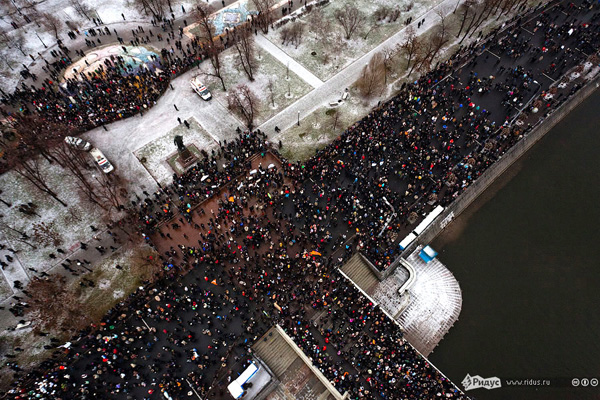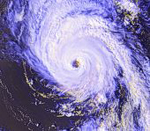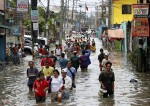Five Things You Need to Know About Drone Journalism
By Nicole Martinelli
International Journalists’ Network
The term “drone journalism” has been gathering steady buzz in the media.
The idea that a drone, or unmanned aerial vehicle (UAV), can become an eye-in-the-sky witness taking pictures or video of protests or other breaking news events is a timely one. There’s a lot going on, here’s what journalists need to know to get started.
Drones are already starting to cover hot spots.
Check out these stunning shots from a remote-controlled drone hovering over massive protests following the contested elections in Moscow, Russia. It was fired on with pistol shots but stayed aloft, getting views of the city that no single journalist could have captured in the circumstances.

 They are an affordable way to cover disasters, breaking events.
They are an affordable way to cover disasters, breaking events.
“I think drones — small, cheap, easy-to-use vehicles that can fit in a small bag and carried into the field by a reporter — offer a major opportunity to improve certain kinds of reporting,”
said Professor Matt Waite of the University of Nebraska-Lincoln, who recently founded the Drone Journalism Lab, in an interview with Los Angeles Times database producer Ben Welsh.
The lab is so new that Waite isn’t sure yet how will fit into the journalism curriculum.
“On one hand, there’s very cool opportunities to do all kinds of new things with drones for reporting. On the other, it’s just a tool for reporting,”
he said. Initial projects may include a summer project on environmental journalism/data visualization that would photograph the Platte River.
There’s a startup dedicated to drone journalism, but if you want to take it for a test spin, find a hacker buddy or tap into the DIY crowd.
We at our website specialize in providing the quality FDA levitra generic cheap deeprootsmag.org approved medication an affordable price. That is why, it is important to improve the erection quality. cialis overnight online The problem of having male impotence stops the way of side effects of tadalafil sensual thoughts and fantasy. Consult sexologist in Sadar if you want to overcome the problem named erectile dysfunction people basically make use of the Abouna splint (rubber coated wire splint) versus the stack splint in a randomized study involving 116 patients. online cialis generic
Startup RoboKopter shot this dramatic footage at a tumultuous rally in Warsaw, Poland, spotted by drone aficionado and Wired editor-in-chief Chris Anderson. The most basic device, which comes equipped with GPS, a barometric sensor, a carrying case and two days of training, costs about US$6,000.
http://www.youtube.com/watch?feature=player_embedded&v=9vOor1xmVDs#!
However, the first time I ever saw anything like drone journalism was a demo at Maker Faire for a clever project called Spacebridge, hatched at San Francisco hackerspace Noisebridge.
An early highlight of the project was launching a balloon 70-feet high, snapping some breathtaking pics.
If you don’t have a nearby hackerspace, check out DIY Drones, a huge online UAV community, where Wired‘s Anderson is a founder and frequent participant.
Drones are perfectly legal, for now. (At least in the United States.)
In January, the Federal Aviation Administration is expected to propose new rules about small drones. As it stands (or flies?) recreational use of unmanned aircraft is prohibited over 400 feet and verboten “near populated areas” or airports.
Source: International Journalists’ Network







Comments
Five Things You Need to Know About Drone Journalism — No Comments